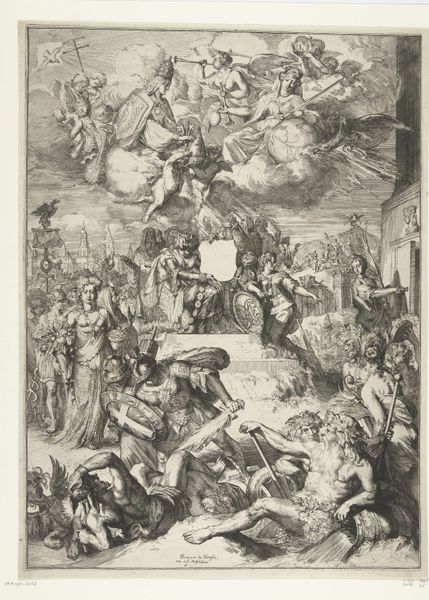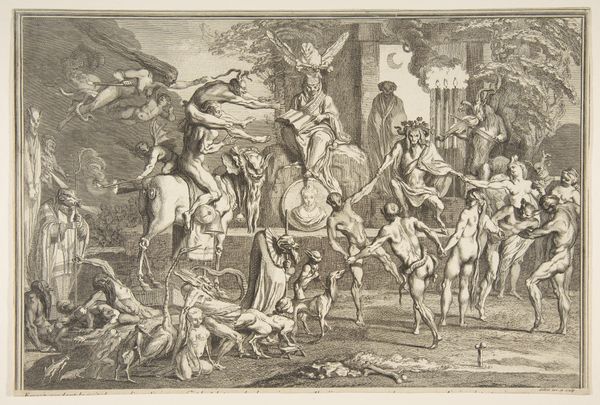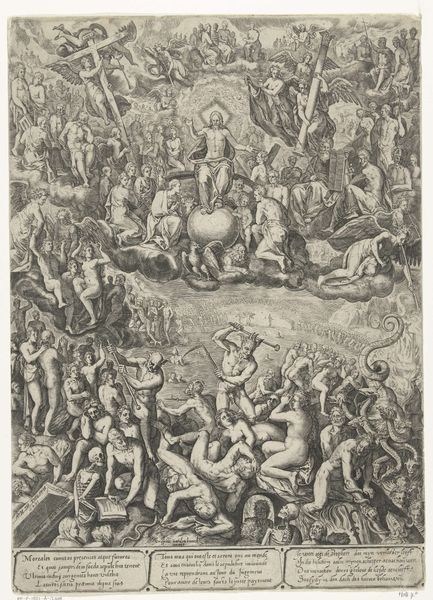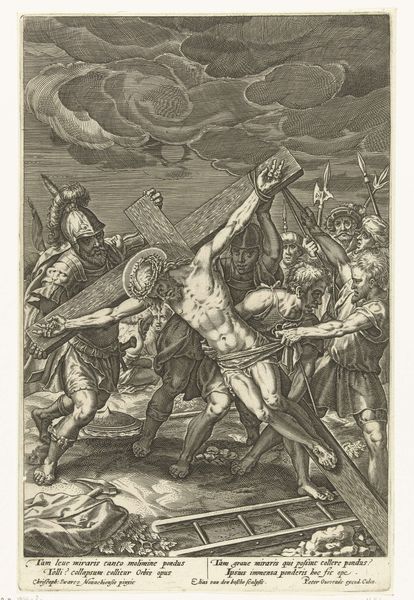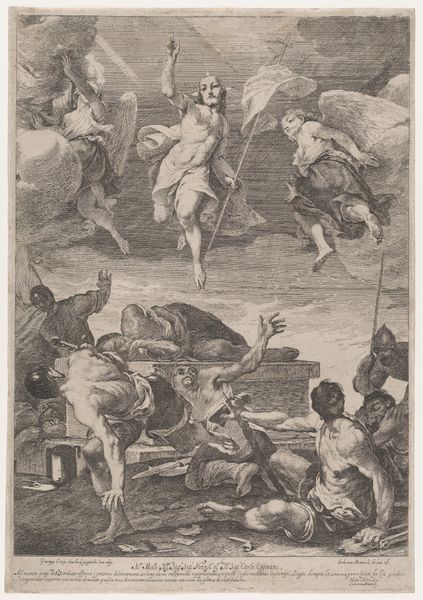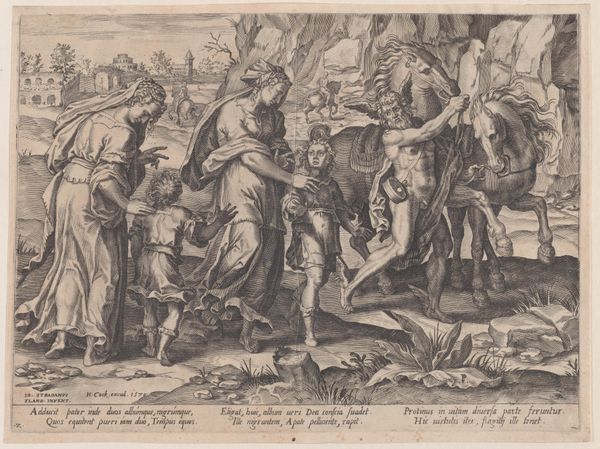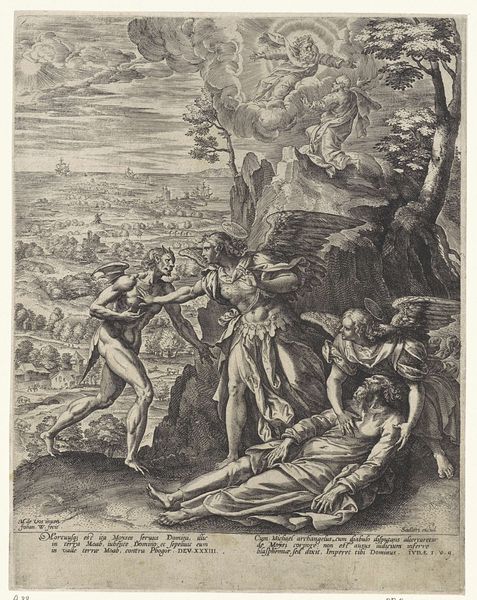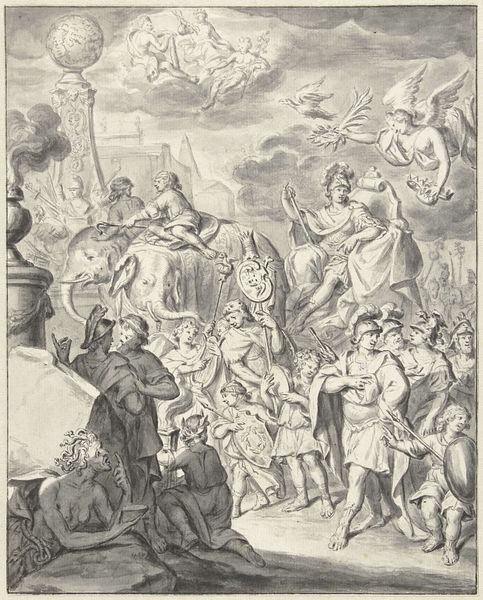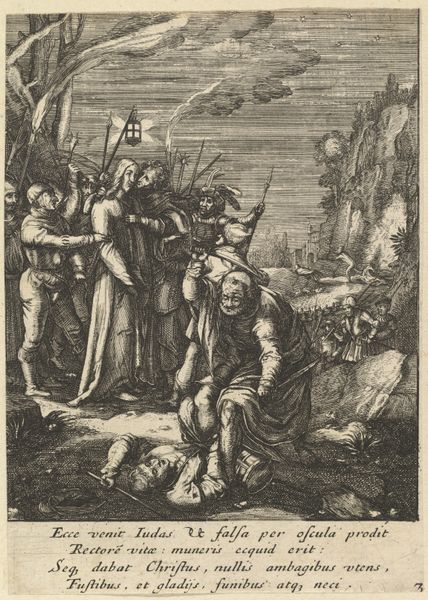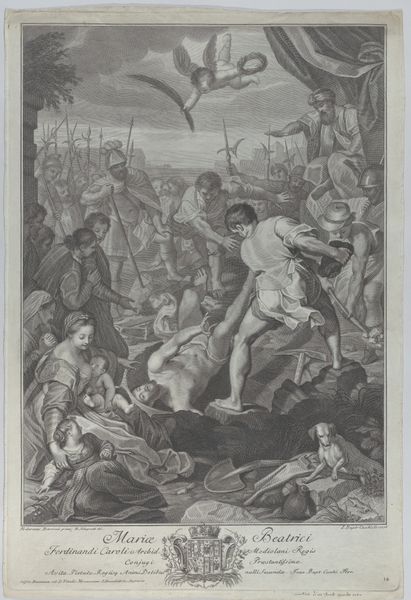
print, engraving
#
narrative-art
#
baroque
#
pen drawing
# print
#
figuration
#
line
#
history-painting
#
engraving
Dimensions: height 318 mm, width 200 mm
Copyright: Rijks Museum: Open Domain
Curator: This engraving by Romeyn de Hooghe, created in 1672, is titled "Two Episodes from the Murder of the De Witt Brothers." It depicts a horrifying moment in Dutch history. What are your initial thoughts? Editor: Visually, it strikes me as incredibly dense. The composition is packed with figures, creating a sense of chaos and brutality that is immediately palpable. The sharp, etched lines add to the violence of the scene. Curator: Precisely. De Hooghe masterfully employs the engraving technique to convey the graphic details of the murder. Note the stark contrast between light and shadow, a classic Baroque technique that amplifies the dramatic intensity and draws the eye to key narrative elements within each episode. Editor: Considering its time, what readily available materials would De Hooghe be working with? Copper plates, surely, and what type of inks and paper stock? The socio-economic and material conditions clearly affected how quickly and widely such an image could be disseminated, impacting public sentiment. I mean, we can imagine the cost versus the influence it might have had given these terrible images. Curator: Good points, these prints allowed for relatively widespread distribution compared to unique painted works. However, consider also the semiotic weight carried in the symbolism—the broken bodies, the upraised weapons... it's a deliberate appeal to both shock and outrage. Editor: Absolutely, the shock is there in spades, it is obvious how such events took place. It does provoke us, but as you are implying, its purpose isn’t just pure, unfiltered recording of violence. These images solidify an interpretation. Consider how it might alter historical understandings in circulation even now... Curator: And perhaps how de Hooghe himself took a position? This work wasn’t simply documenting the murder of Johan and Cornelis de Witt; it was engaging with complex political dynamics, reflected through carefully chosen compositional elements and exaggerated expressions. The perspective is vital. Editor: Indeed. Understanding the printmaking process here illuminates not only the artwork's physical creation, but also its cultural function. How it contributed to—and potentially even shaped—public memory surrounding this gruesome event. Curator: Looking at it this way truly enriches our understanding.
Comments
No comments
Be the first to comment and join the conversation on the ultimate creative platform.
